- Overview
- Trip Outline
- Pricing
- Trip Includes
- Trip Excludes
- Gallery
- Reviews
- FAQ
Route

Technical Characteristics:
Route Profile: Medium. A reasonable level of fitness is required, as these conservation tourism trips can require sustained endurance levels, hills and longer days. These conservation tours are appropriate for all people and suitable for older adults in good health with overall good mobility, who are comfortable participating in up to 5 hours of physical activity per day. These tours may include hiking of moderate intensity at an easy pace, sometimes with steep and/or uneven trails, with obstacles such as wet logs, branches and muddy areas. All our guided tours include natural interpretation and focus on the history, volcanology and the native flora and fauna of the wilderness areas.
Travel Season: Departures: Any date on request from November to April
*Group rates available for this tour. As this is a guided tour, the pricing improves with more people participating. Please ask us for details.
Accommodation:
3* hotels and ecolodges
Discover the wonders that Darwin saw on his journey to the south of Chile. Explore this fascinating territory of the Chilean rainforest to see the same species of flora and fauna described by one of the fathers of modern science. Alongside exceptional local guides you will assist in the collection of valuable data for understanding these ecosystems. You can record what you observe in your nature traveler log. This tour is for those who love nature and want to be protagonists of its conservation. During the course of eight days you can explore the hidden corners of Chiloe on foot and by water. You will visit the Senda Darwin Biological Station and the private conservation areas of Ahuenco Park and Coluco Lake where the pudú deer is abundant. In Chiloe fishing boats you will discover the coast of the island, where you can spot several species of mammals, shorebirds and seabirds, not to mention the Humboldt Penguin and the Magellanic Penguin. Some of the most amazing migratory birds you can see in all its splendor is the Hudsonian godwit. This bird travels 14,000 km from Alaska to Chiloe Island. The Audubon Society, along with local partners is beginning to address conservation needs. Their strategic plan involves educational programs and engaging landowners into Best Management Practices: watershed management and sustainable agricultural techniques. These initiatives spread awareness about the importance of coastal wetland habitats to migratory shorebirds and ensure that Hudsonian godwits and Whimbrels have a safe and sustainable wintering place for years to come.
Itineraries
Day 1
Santiago - Puerto Montt - Ancud
Arrival to Puerto Montt Airport and shuttle to Ancud. We can pick you up from a hotel (in Puerto Varas) or the airport in Puerto Montt. We'll have a one hour transfer to the ferry crossing - first birdwatching opportunity from the ferry. Arrival to the village of Chacao which was where Spaniards arrived in 1567 (historical, cultural and natural history orientation). Our local guides greet us with a welcome dinner and a technical briefing about the tour.
Day 2
Discover Chiloé Island - Birdwatching & Oyster Tasting
We start our day driving through the countryside to Caulin cove (seaweed collection, birdwatching and oyster tasting). Picnic lunch at the Biological Field Station of the Senda Darwin where we’ll learn about ongoing biological studies and do a short forest walk in search of the chucao - Southern Chile’s emblematic tapaculo. Depending on the studies being carried out, we will participate by collecting data to contribute to the scientific understanding of this ecosystem. Overnight in Ancud.

Day 3
Penguins & Sea Mammals at Puñihuil Bay
Today will be spent on the rugged Pacific Coast of the island – visiting the Puñihuil penguin colony (where Humbolt and Magallanic nest side by side) by boat and if conditions permit - visiting sea lions and possibly going out to search for blue whales - the largest population in the Southern Hemisphere having been discovered off Chiloe Island in 2001. We’ll have time to search the coastal forest areas and beaches for signs of the pudu - one of the smallest deer species and another of Chiloe’s emblematic animals. By late afternoon we’ll return to our hotel in Ancud.
Day 4
Birdwatching in River Chepu and Coluco Lagoon
A full day in the Chepu River Valley where we will embark on a boat with local fisherman to bird watch at Laguna Coluco and among the sunken forest - a reminder of the 1960’s earthquake that reshaped Southern Chile. We’ll have lunch at a nearby farmhouse and an afternoon walk in the forest of the Senderos de Chepu (in search of other forest species). Later, we’ll enjoy a traditional curanto pitbake and stay overnight in Chepu.

Day 5
Chepu River - Ahuenco Park
Get ready for your first probable encounter with a Pudu, the smallest deer in Chile. We’ll visit the private conservation area of Ahuenco Park, where there is a collaborative project with the fishermen of Chepu River. Here, you will meet the local park ranger "José Vargas", a native Huilliche man that will lead our expedition in this area. Lodging at Refugio Ahuenco.
Day 6
Ahuenco Park
Today we will explore the trails of the dense Chiloe forest, the habitat of the pudu (the chances of spotting the deer are high). Here, we will support the research of this deer by documenting the location, time, and behavior of our sighting. We can also volunteer to help with the maintenance of one of the park trails. Lodging at Refugio Ahuenco
Day 7
Ahuenco - Dalcahue - Castro's Conservation Wetlands
We leave Ahuenco Park and go explore a very important conservation wetland area near Castro, the capital city of Chiloé Island. On our way to Castro, we'll visit the nearby fishing port of Dalcahue for lunch in their market where we will also learn about local aquaculture and the effect of salmon and mussel farming (Chile is the world’s #2 producer of both) on local wildlife and the local economy. Later, we’ll visit the nearby Putemun wetland area - part of a conservation program being run by the WWF, The Nature Conservancy, Audobon Society and Manomet. It is home to the largest population of Hudsonian godwits in the world (during the Southern Hemisphere migration from Alaska) among other species. Finally, we'll stay overnight at a very special hotel in Castro. Evening at leisure. Ask our guides if you need some local knowledge about dining.
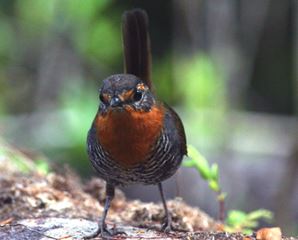
Day 8
Wooden Architecture of Chiloé Island - Puerto Montt Airport
In the morning we’ll have a 9:00 am departure toward the fishing village of Quemchi and the nearby birding area surrounding the Aucar Island - known locally as the Island of Sailors Souls for its cemetery. We’ll walk the 500 meter footbridge to the island and also have the opportunity to study the flora planted by a former priest of the local chapel who made the small island into a botanical garden of native species. We’ll have lunch in Quemchi before driving up the coastal road to the ferry ramp that will take us back to mainland Chile. Arrival in Puerto Montt airport or Puerto Varas at approximately 5:30 pm. End of services.

Prices
Included:
- Professional tour guide
- Private transportation
- Accommodation at 3 * hotels and ecolodges
- Meals as per itinerary (7 breakfasts, 2 picnic lunches, 6 lunches and 3 dinners)
- Gratuities at restaurants and hotels
- Accident insurance
- All activities according to the itinerary: birdwatching, sea mammals watching, soft hiking, volunteer nature conservation activities
- Entrance fees
Not Included:
- International and local flights
- Extra Drinks
- Laundry and SPA services
- Gratuity to tour conductor/crew about $120.00 USD per person
No Details Found



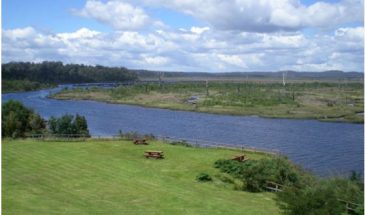
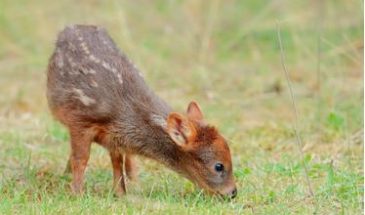
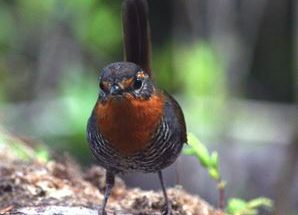

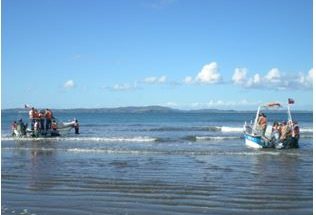




There are no reviews yet.